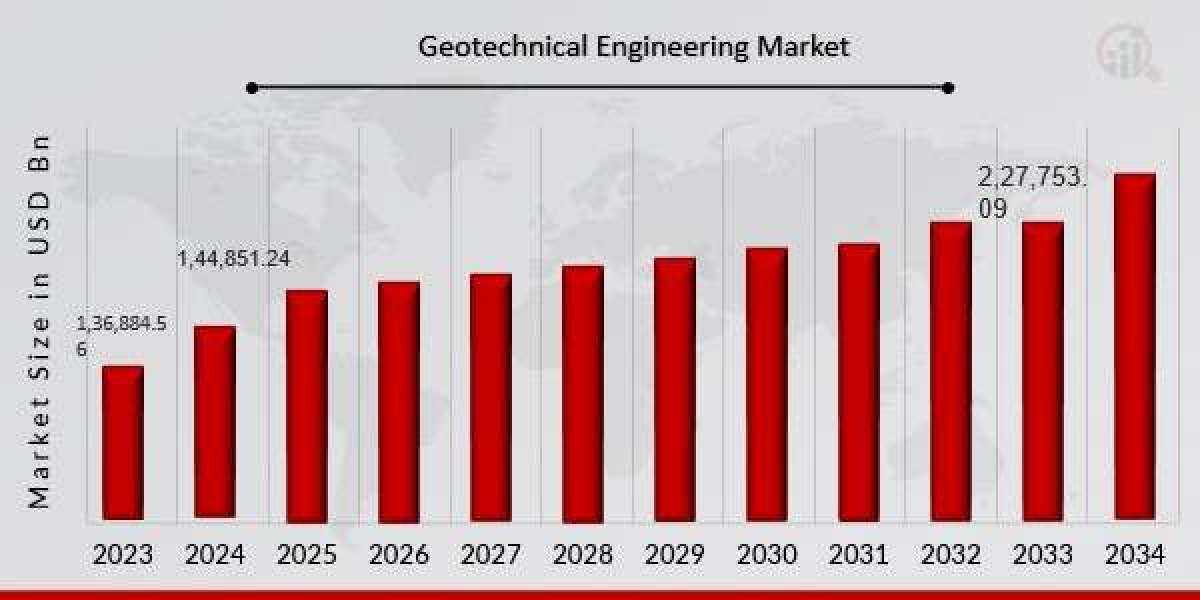The geotechnical engineering market has emerged as one of the most crucial segments within the broader construction and civil engineering industry. This specialized field focuses on understanding the behavior of earth materials and how they interact with human structures, from towering skyscrapers and highways to dams, tunnels, and offshore drilling platforms. The market’s growth is closely tied to the rapid pace of urbanization, infrastructure expansion, energy projects, and technological innovations that are reshaping how land is utilized across the world. With population growth and industrialization driving demand for resilient and sustainable structures, geotechnical engineering services are playing an increasingly central role in project planning and execution.
At the heart of the market lies the need to address the complexity of soil, rock, groundwater, and environmental conditions that can make or break a project. Unlike standard engineering practices that deal with materials such as steel or concrete with predictable behaviors, geotechnical engineering involves working with natural elements that vary from location to location. This requires extensive site investigation, soil testing, risk analysis, and the design of foundations and earthworks tailored to specific conditions. As urban centers continue to grow vertically and horizontally, the demand for expertise in assessing ground stability and designing reliable foundations has surged.
The market is also shaped by megaprojects in transportation and energy sectors. Massive investments in highways, railways, and metro systems are pushing the need for geotechnical expertise to ensure safe tunneling, slope stability, and ground improvement. In the energy sector, the development of offshore oil rigs, wind farms, and hydroelectric dams demands sophisticated analysis of soil mechanics and rock behavior under challenging conditions. As renewable energy projects accelerate worldwide, the requirement for advanced geotechnical solutions to support offshore wind turbines and geothermal plants is expected to rise significantly.
One of the strongest drivers of the geotechnical engineering market is the growing emphasis on sustainability and environmental safety. Governments and regulators increasingly demand that construction projects minimize their ecological impact and ensure long-term resilience against natural hazards such as landslides, earthquakes, and flooding. This trend has created opportunities for geotechnical firms to integrate advanced modeling techniques, ground monitoring systems, and environmentally sensitive design solutions into their service offerings. Sustainable ground improvement methods, such as the use of recycled materials or low-impact soil stabilization techniques, are becoming more prominent as both private and public sector stakeholders adopt green construction practices.
Technological advancements are reshaping the market landscape. The adoption of digital tools such as Geographic Information Systems (GIS), Building Information Modeling (BIM), and 3D geotechnical modeling software has made it possible to simulate complex subsurface conditions with greater accuracy. Remote sensing technologies, drones, and satellite imagery are being used to conduct preliminary site assessments and monitor ground behavior in real time. These tools not only enhance efficiency but also reduce costs and risks associated with unforeseen ground challenges. Artificial intelligence and machine learning are also beginning to influence geotechnical engineering, enabling predictive analytics that can forecast soil behavior under varying stress conditions. This integration of technology is expanding the capabilities of geotechnical services and opening new growth avenues for companies operating in the market.
The demand for geotechnical engineering services is not confined to developed nations alone. Emerging economies in Asia, Africa, and Latin America are witnessing rapid infrastructure development, which is fueling demand for ground investigation and engineering expertise. Countries like India and China, with their ambitious urban expansion and high-speed rail networks, represent some of the largest markets for geotechnical services. Similarly, oil-rich nations in the Middle East continue to invest in large-scale construction and energy projects, requiring specialized foundation and soil stabilization solutions. The global scope of the market ensures that firms with strong technical capabilities and international experience can tap into diverse opportunities across regions.
At the same time, challenges remain in the form of high project costs, stringent safety regulations, and the unpredictability of natural conditions. Geotechnical investigations often involve complex and time-consuming procedures, such as drilling boreholes, conducting laboratory tests, and installing monitoring instruments. These activities add to the overall project budget and timeline, which can deter smaller developers or governments with limited resources. Additionally, natural variability in soil and groundwater conditions means that even the most advanced models cannot eliminate all risks, requiring geotechnical engineers to maintain flexibility and adaptability throughout project lifecycles.
The competitive landscape of the geotechnical engineering market is characterized by a mix of large multinational engineering firms and specialized local consultancies. While global players often lead in advanced technologies and large-scale project expertise, regional firms provide valuable local knowledge and cost-effective solutions tailored to specific geologies. Strategic collaborations between these entities are becoming common, allowing firms to leverage both global expertise and regional insight. Moreover, the increasing involvement of government agencies, research institutions, and academic bodies is supporting innovation and talent development in the sector, further strengthening the market’s growth potential.



